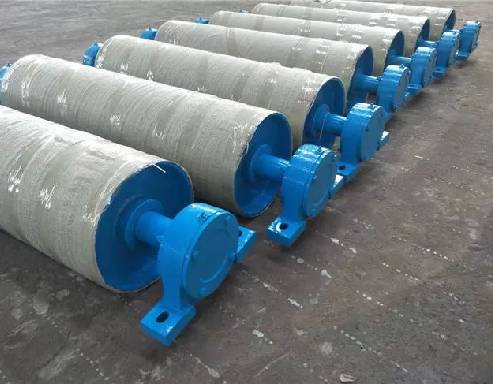 Afrikaans
Afrikaans  Albanian
Albanian  Amharic
Amharic  Arabic
Arabic  Armenian
Armenian  Azerbaijani
Azerbaijani  Basque
Basque  Belarusian
Belarusian  Bengali
Bengali  Bosnian
Bosnian  Bulgarian
Bulgarian  Catalan
Catalan  Cebuano
Cebuano  Corsican
Corsican  Croatian
Croatian  Czech
Czech  Danish
Danish  Dutch
Dutch  English
English  Esperanto
Esperanto  Estonian
Estonian  Finnish
Finnish  French
French  Frisian
Frisian  Galician
Galician  Georgian
Georgian  German
German  Greek
Greek  Gujarati
Gujarati  Haitian Creole
Haitian Creole  hausa
hausa  hawaiian
hawaiian  Hebrew
Hebrew  Hindi
Hindi  Miao
Miao  Hungarian
Hungarian  Icelandic
Icelandic  igbo
igbo  Indonesian
Indonesian  irish
irish  Italian
Italian  Japanese
Japanese  Javanese
Javanese  Kannada
Kannada  kazakh
kazakh  Khmer
Khmer  Rwandese
Rwandese  Korean
Korean  Kurdish
Kurdish  Kyrgyz
Kyrgyz  Lao
Lao  Latin
Latin  Latvian
Latvian  Lithuanian
Lithuanian  Luxembourgish
Luxembourgish  Macedonian
Macedonian  Malgashi
Malgashi  Malay
Malay  Malayalam
Malayalam  Maltese
Maltese  Maori
Maori  Marathi
Marathi  Mongolian
Mongolian  Myanmar
Myanmar  Nepali
Nepali  Norwegian
Norwegian  Norwegian
Norwegian  Occitan
Occitan  Pashto
Pashto  Persian
Persian  Polish
Polish  Portuguese
Portuguese  Punjabi
Punjabi  Romanian
Romanian  Russian
Russian  Samoan
Samoan  Scottish Gaelic
Scottish Gaelic  Serbian
Serbian  Sesotho
Sesotho  Shona
Shona  Sindhi
Sindhi  Sinhala
Sinhala  Slovak
Slovak  Slovenian
Slovenian  Somali
Somali  Spanish
Spanish  Sundanese
Sundanese  Swahili
Swahili  Swedish
Swedish  Tagalog
Tagalog  Tajik
Tajik  Tamil
Tamil  Tatar
Tatar  Telugu
Telugu  Thai
Thai  Turkish
Turkish  Turkmen
Turkmen  Ukrainian
Ukrainian  Urdu
Urdu  Uighur
Uighur  Uzbek
Uzbek  Vietnamese
Vietnamese  Welsh
Welsh  Bantu
Bantu  Yiddish
Yiddish  Yoruba
Yoruba  Zulu
Zulu Understanding the Functionality of Return Rollers in Belt Conveyor Systems
Understanding Belt Conveyor Return Rollers
Belt conveyor systems are widely used in various industries for transporting materials efficiently over long distances. At the heart of these systems lies a series of components, among which the return roller plays a crucial role. This article aims to discuss what return rollers are, their importance, the various types available, and their maintenance requirements.
What is a Return Roller?
A return roller is a specific component of a belt conveyor system that is responsible for supporting the return side of the conveyor belt. While the carrying rollers support the belt on its load-carrying side, return rollers help maintain the belt's profile and tension on the return journey back to the feeding point. The return roller allows the conveyor belt to complete its loop, ensuring that the materials being transported remain secure while minimizing wear on the belt itself.
Importance of Return Rollers
Return rollers play an essential role in enhancing the efficiency and longevity of a belt conveyor system. They contribute to several key functions
1. Support and Stability Return rollers support the weight of the returning belt, preventing sagging that can cause misalignment and operational inefficiency.
2. Minimizing Wear By keeping the return side of the belt in the proper position, return rollers help reduce friction and wear. This can significantly extend the lifespan of the conveyor belt.
3. Material Control Return rollers help maintain material flow by ensuring that the belt remains taut, preventing material spillage during the return phase.
4. Reducing Energy Consumption A well-maintained system with properly functioning return rollers can operate more smoothly, leading to lower energy consumption and operating costs.
Types of Return Rollers
belt conveyor return roller

There are several types of return rollers, each designed for different applications and operating environments
1. Flat Return Rollers These are the most common type used in belt conveyors. They consist of a cylindrical surface that provides a smooth path for the return belt.
2. Rubber Coated Rollers These rollers are covered with a layer of rubber to provide enhanced grip and minimize slippage, particularly useful in applications involving heavy or loose materials.
3. Idler Rollers These serve a similar function to return rollers but are often adjustable to control the belt's tension. They play an essential role in smooth belt management.
4. Self-Cleaning Rollers Designed to remove debris and materials that could accumulate on the roller's surface, these help maintain the efficiency of the system while reducing maintenance requirements.
Maintenance of Return Rollers
Regular maintenance of return rollers is vital to ensure the effective operation of the belt conveyor system. Key maintenance practices include
- Regular Inspections Conducting routine checks for wear, alignment, and rotation can help identify potential problems before they escalate.
- Lubrication Ensuring that bearings are adequately lubricated can prevent friction-related wear and improve operational efficiency.
- Cleaning Keeping the rollers free of debris and build-up helps maintain their functionality and prevents excess wear on the conveyor belt.
In conclusion, return rollers are integral to the efficient operation of belt conveyor systems. Understanding their role and ensuring proper maintenance can lead to improved performance, reduced costs, and extended lifespan of both the rollers and the conveyor belt itself. With the right care and attention, businesses can optimize their material handling solutions and achieve greater operational efficiency.
-
Revolutionizing Conveyor Reliability with Advanced Rubber Lagging PulleysNewsJul.22,2025
-
Powering Precision and Durability with Expert Manufacturers of Conveyor ComponentsNewsJul.22,2025
-
Optimizing Conveyor Systems with Advanced Conveyor AccessoriesNewsJul.22,2025
-
Maximize Conveyor Efficiency with Quality Conveyor Idler PulleysNewsJul.22,2025
-
Future-Proof Your Conveyor System with High-Performance Polyurethane RollerNewsJul.22,2025
-
Driving Efficiency Forward with Quality Idlers and RollersNewsJul.22,2025





























